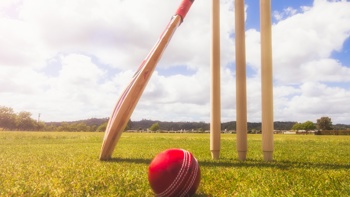Thousands of New Zealanders have gathered at dawn services across Aotearoa to mark Anzac Day, 107 years since our soldiers landed at Gallipoli.
About 2000 people attended a slimmed-down service at the Auckland War Memorial Museum, Tāmaki Paenga Hira.
The crowd was smaller than usual as a result of the country still finding its way out of the Covid Omicron outbreak.
Prime Minister Jacinda Ardern attended and will address the Mount Albert Anzac service later in the morning.
A Ukrainian flag flew high on top of the museum - at the request of the RSA.
As the sky began to lighten, the New Zealand, Australian and Union Jack flags were lowered and the crowd fell silent as those gathered remembered those who had served and lost their lives.
The Reveille was played by Sergeant Bill Rimmer and Vietnam veteran Murray Watene recited his poem, Stand To (First Light Anzac).
"We salute their courage, we honour their sacrifice...We must, we must, we will remember them - lest we forget, Stand down.
"Tēnā koutou, tēnā koutou, tēnā tatou katoa, āmene."
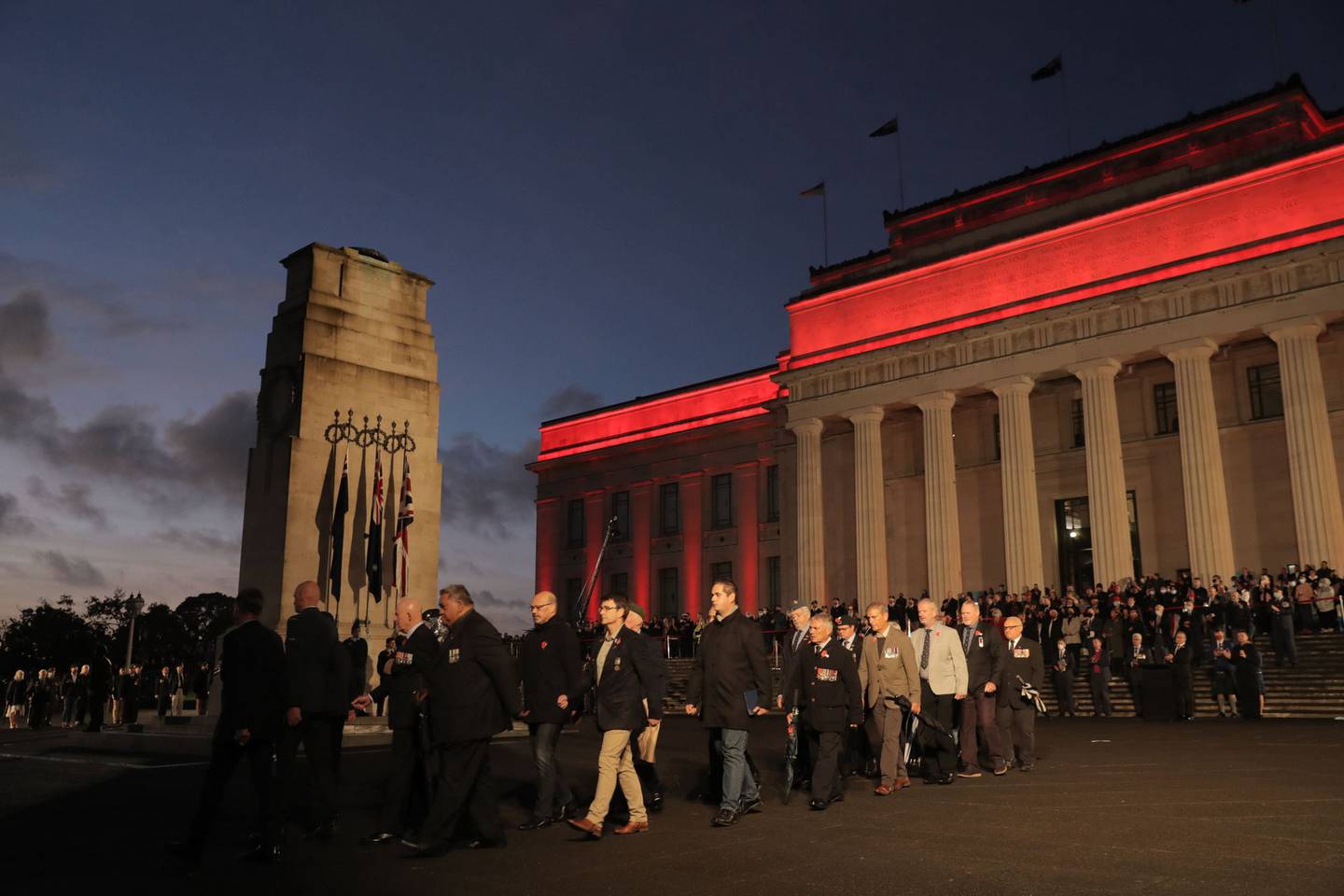
Veterans file off the Court of Honour following the conclusion of the Dawn Service. Photo / Michael Craig
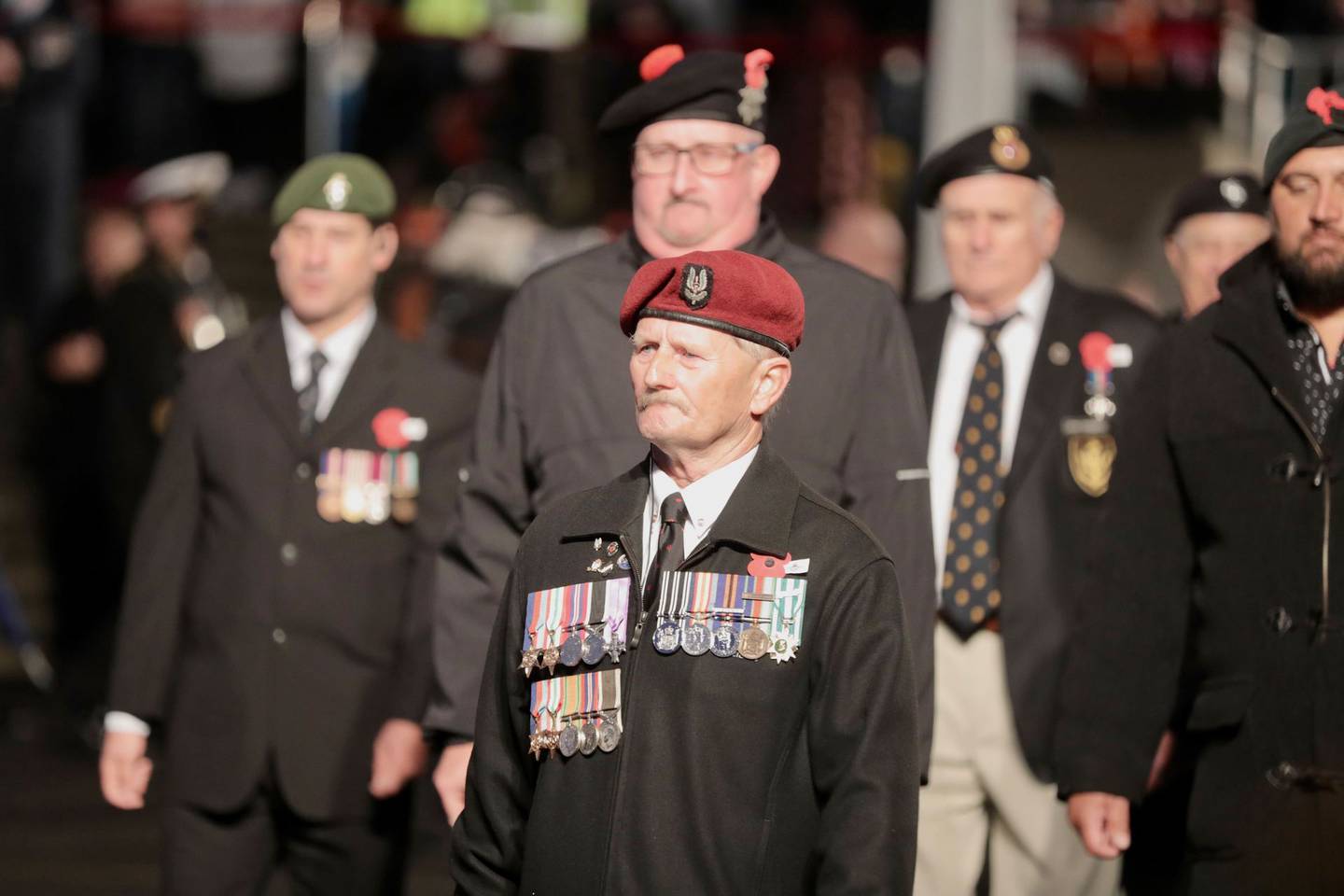
Veterans commemorate the fallen at Auckland War Memorial Museum this morning. Photo / Michael Craig
The national anthems of Australia and New Zealand - the latter in te reo Māori and English - were sung by Te Ohorere Williams.
Wreaths were laid at the Cenotaph by Ardern, Auckland Mayor Phil Goff, and others including Sir Graham Lowe and Sir Buck Shelford representing the Auckland Returned Services Association.
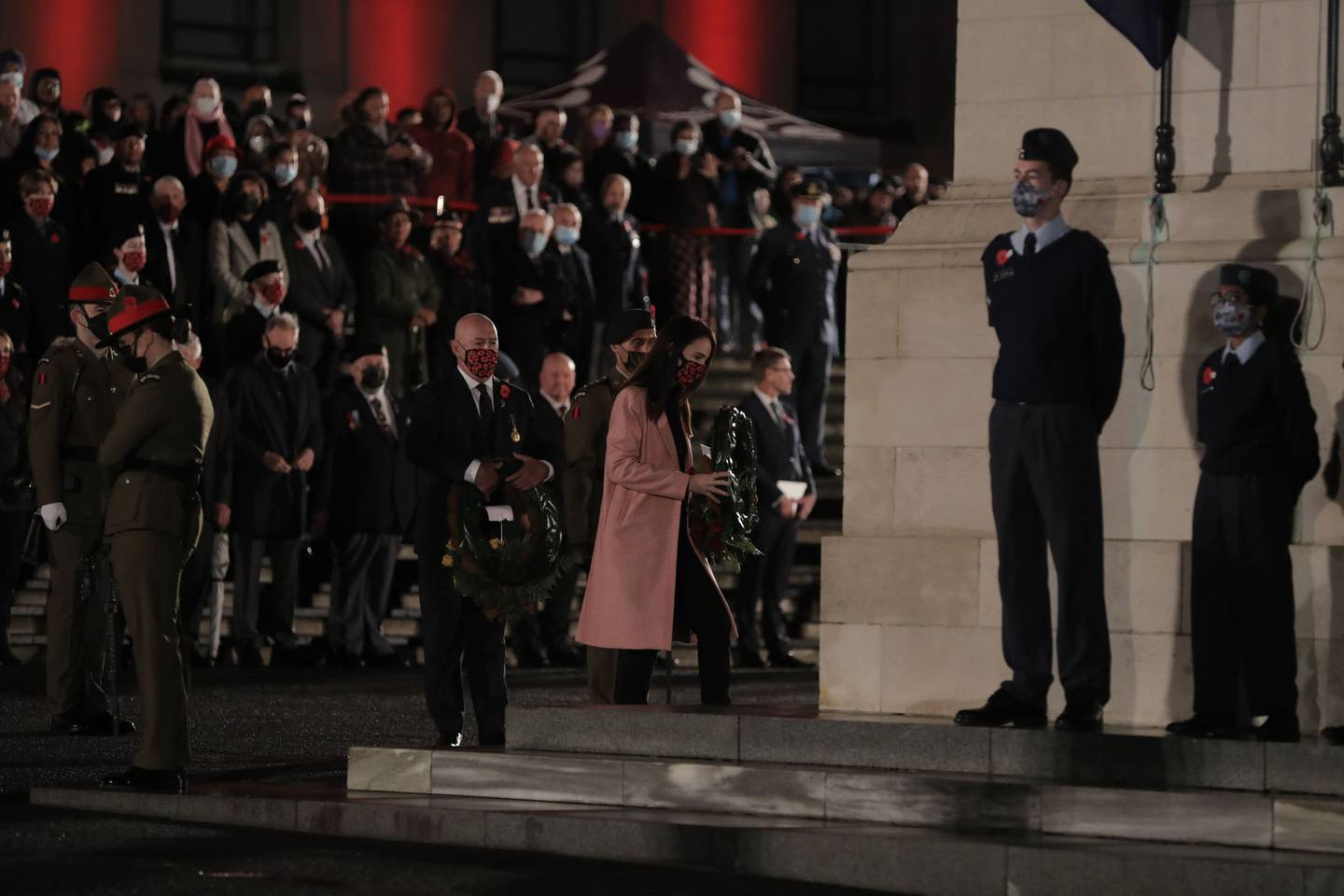
Prime Minister Jacinda Ardern lays a wreath at the base of the Cenotaph and Auckland War Memorial Museum. Photo / Michael Craig
The service was opened with a karakia from Reverend Otene Reweti, and St Kentigern's College head prefects Archie Manning and Xing Xing Lawrence read the Anzac dedication.
Veterans marched off the court of honour to the sound of applause after the Anglican Bishop of Auckland, the Right Reverend Ross Bay, pronounced a Benediction to conclude the dawn service.
"May God grant to the living grace, to the departed rest, to all the world peace and concord, to all who have served and gone before us, and to every faithful servant life everlasting."
Members of the public remained at the site, laying poppies at the foot of the Cenotaph following the service. It has been 100 years since Anzac poppies were first sold on New Zealand's streets to commemorate those who had died and fundraise for veterans still living.
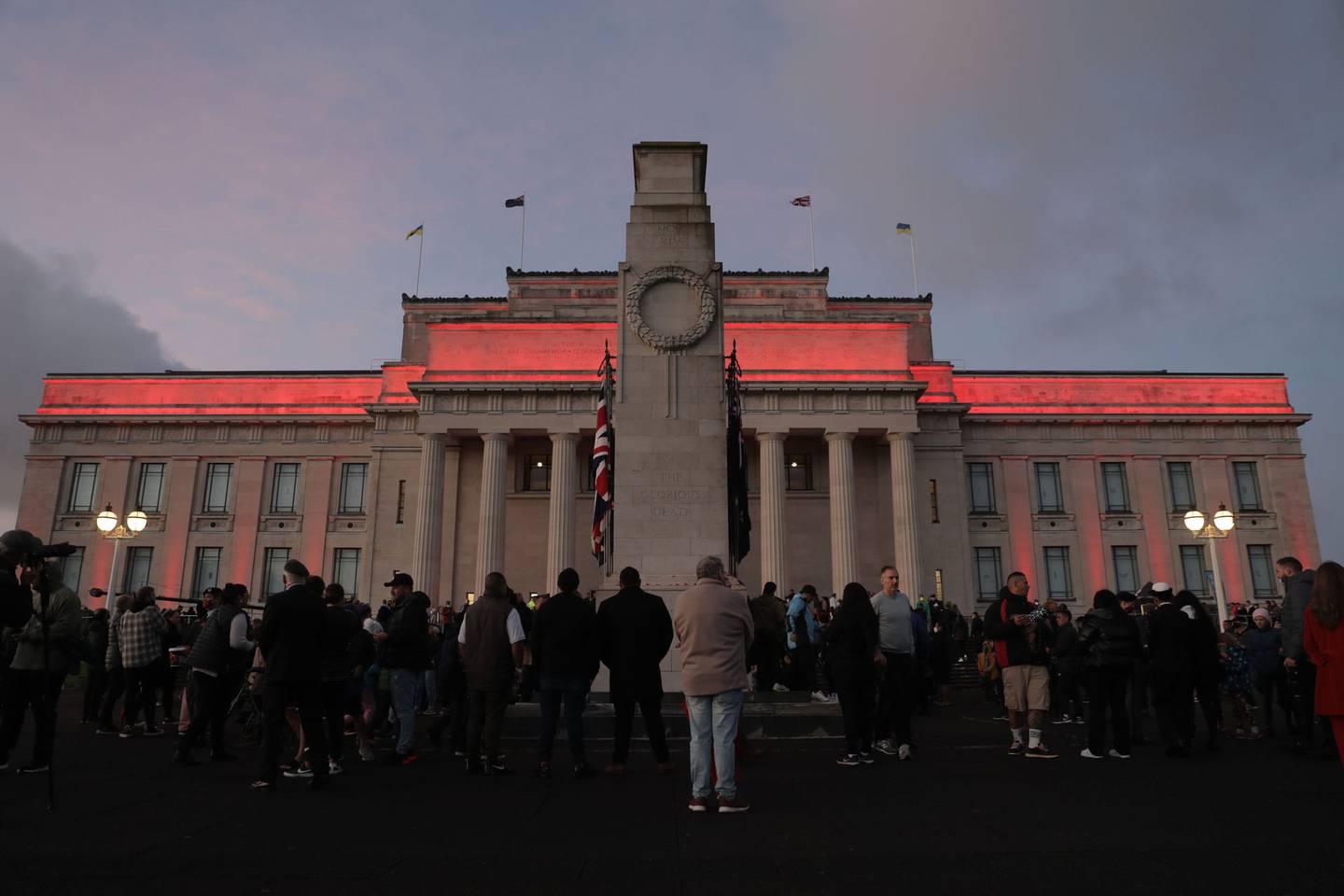
Members of the public lay poppies at the foot of the Cenotaph following this morning's Dawn Service in Auckland. Photo / Michael Craig
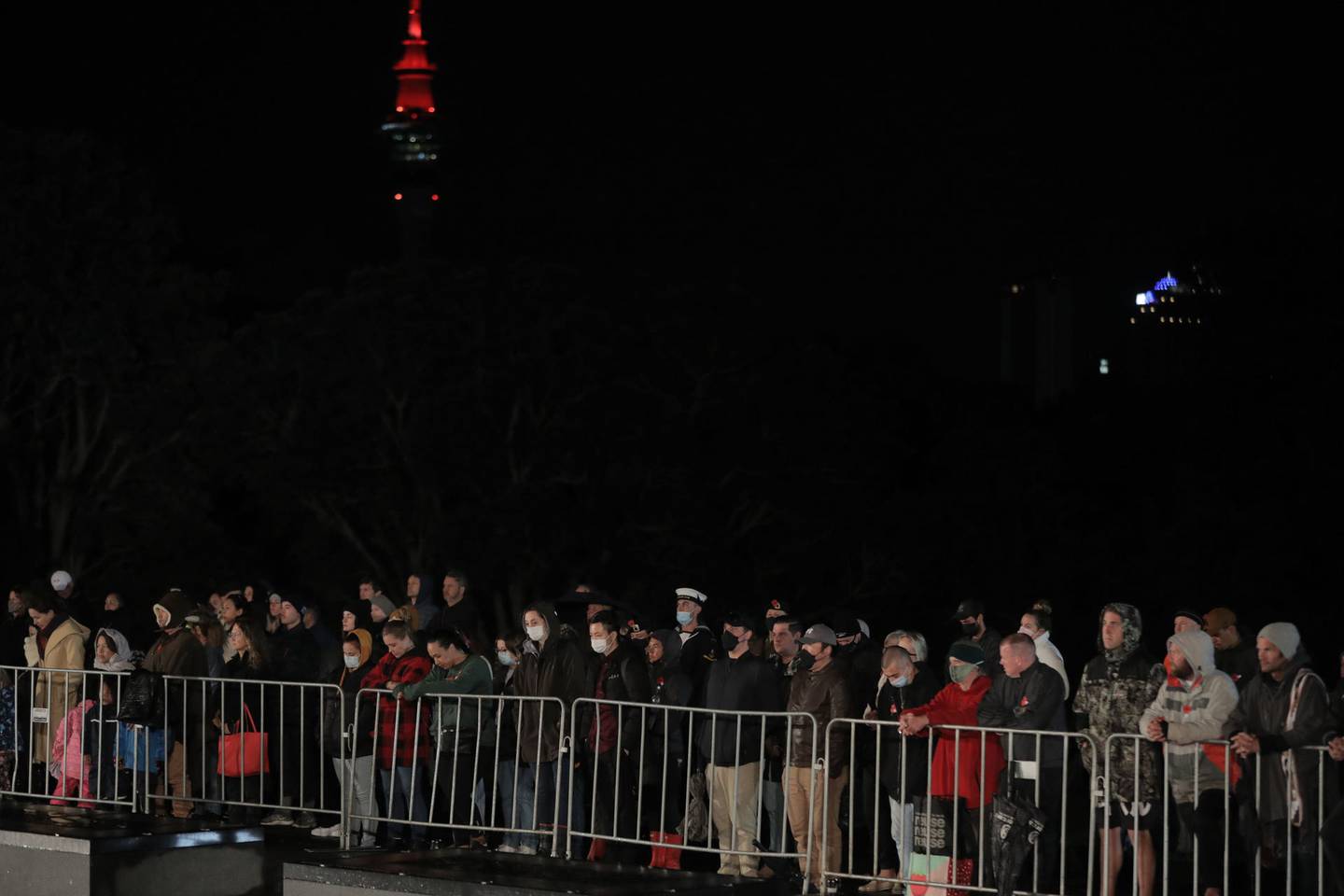
A smaller crowd than usual at Auckland's Dawn Service this morning. Photo / Michael Craig
Anzac Day commemorated around New Zealand and the world
In Wellington, more than 400 people gathered for the National Dawn Service at Pukeahu National War Memorial Park. Governor-General Dame Cindy Kiro delivered the Anzac address.
Chief of the Defence Force, Air Marshal Kevin Short, read extracts from the diary of 19-year-old Sergeant Vincent Arthur from Inglewood, who took part in New Zealand's desperate defence of Singapore in 1942.
Sergeant Arthur was shot down over the coast of Singapore and has no known grave but is commemorated at the Singapore memorial, RNZ reports.
Soldiers loosened the flags in front of the national war memorial, in preparation for them to be lowered to half-mast.
Turkish ambassador Omur Unsay and Wellington RSA president Colonel Theo Kuper also spoke.
Returned and Services Associations national president BJ Clark says the public is welcome to come into their local RSA and be part of remembrance events, and chat with veterans.
Wellington resident Manfred James, who attended the dawn service in the capital, was wearing his grandfather's medals at the ceremony.
James returned to New Zealand during the pandemic and this was his first opportunity to commemorate Anzac Day in person since then.
"We've learned a lot over the last few years of how we can adapt during difficult times...it's really important to come back here and pause for a moment," he told Newstalk ZB.
In Christchurch the traditional dawn service in Cranmer Square has not been held due to the pandemic, to avoid putting elderly servicemen and women at risk from Omicron.
But a service will be live-streamed at 10am from Christchurch's Transitional Cathedral.
In Dunedin, hundreds gathered under a clear starry sky at the cenotaph at Queen's Gardens for a 6.30am service which began with two shots of a 25 pound gun operated by gunners from the Royal New Zealand Artillery.
Captain Shaun Fogarty addressed the crowd, acknowledging those who served and touching on other conflicts around the world including Russia's invasion of Ukraine, the Otago Daily Times reported.
''We should not shy aware from recognising that there are those in the world who are prepared to use violence in its most extreme forms in an effort to achieve their aims.''
In Northland small Anzac Day ceremonies have still been held.
At least 500 people gathered at the Whangārei Cenotaph in Laurie Hall Park, with the public in a fenced area to keep veterans safe. There was no parade through the city.
A service was also held at Tou Rangatira, a series of carved pou near Te Tii Marae in Waitangi. And at the Paihia RSA at least 300 people gathered for a march down to the waterfront, where a service was held beside a propeller from the Navy frigate Canterbury. The rest of the vessel is at the bottom of Deep Water Cove.
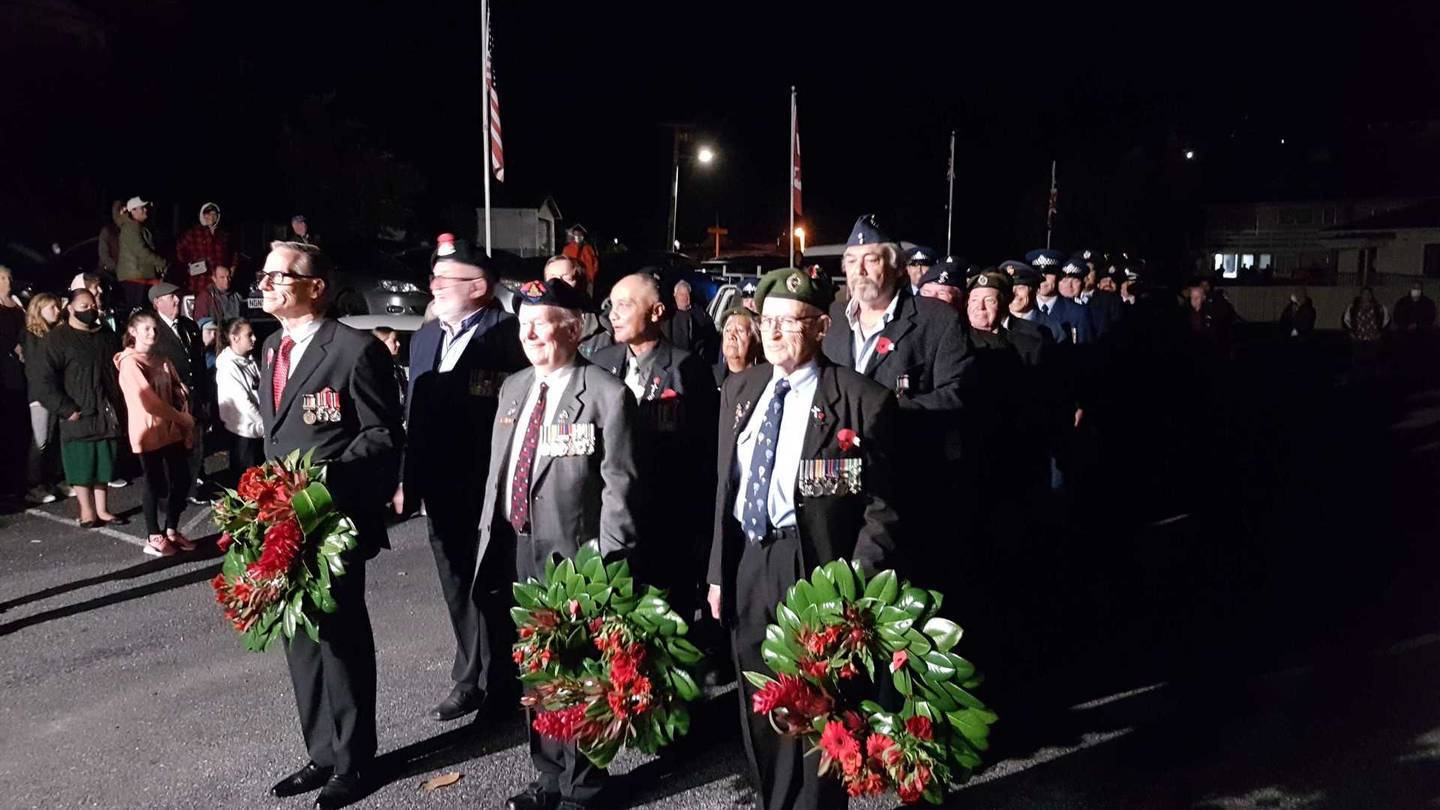
Paihia RSA members at the Anzac Day Dawn Parade this morning. Photo /Peter de Graaf
In Hawke's Bay people gathered at Taradale and Hastings for dawn ceremonies, with an Air Force flyover rumbling over the Hastings Civic Square Cenotaph.
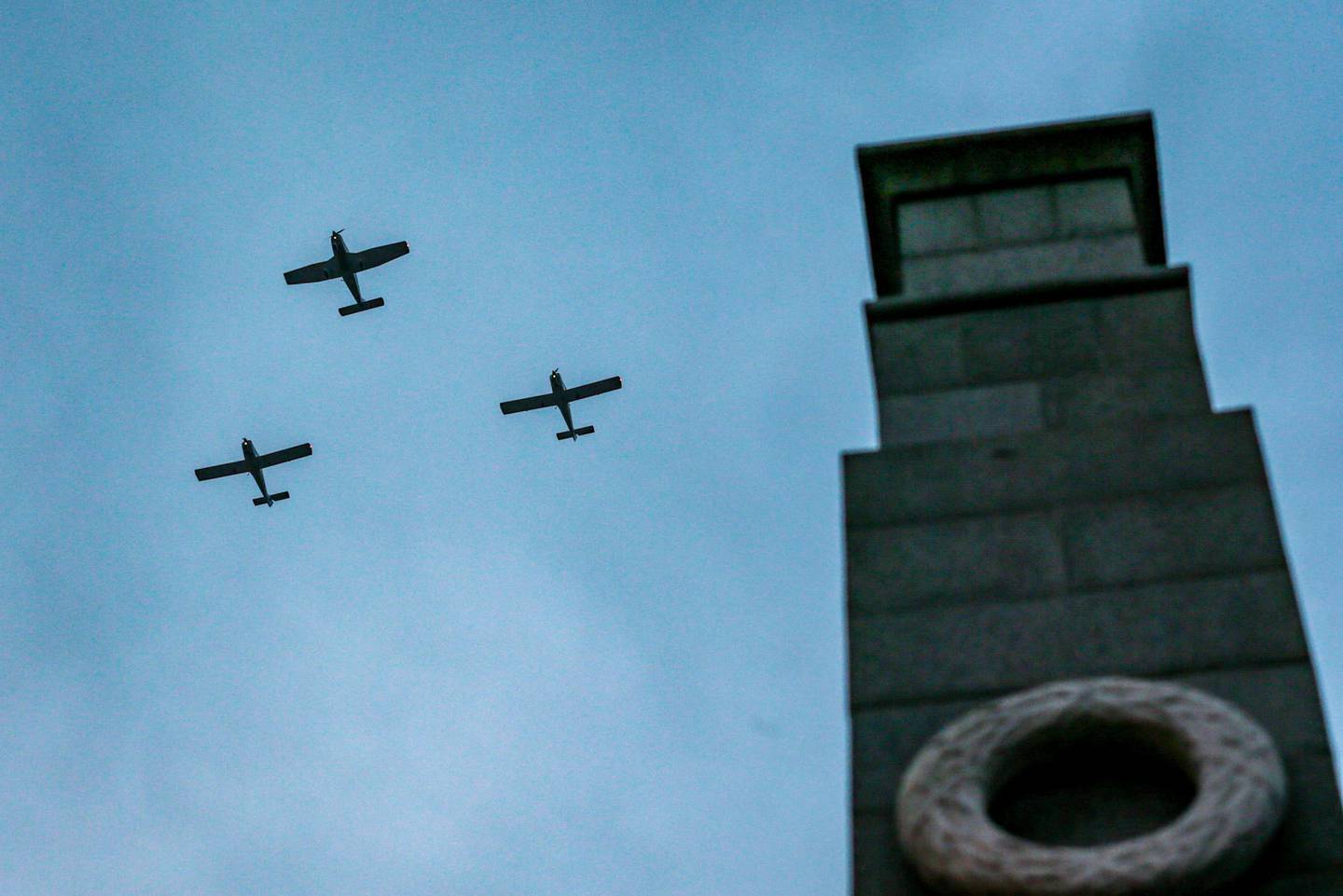
Planes from the Royal NZ Air Force fly over the Hastings cenotaph this morning. Photo / Paul Taylor
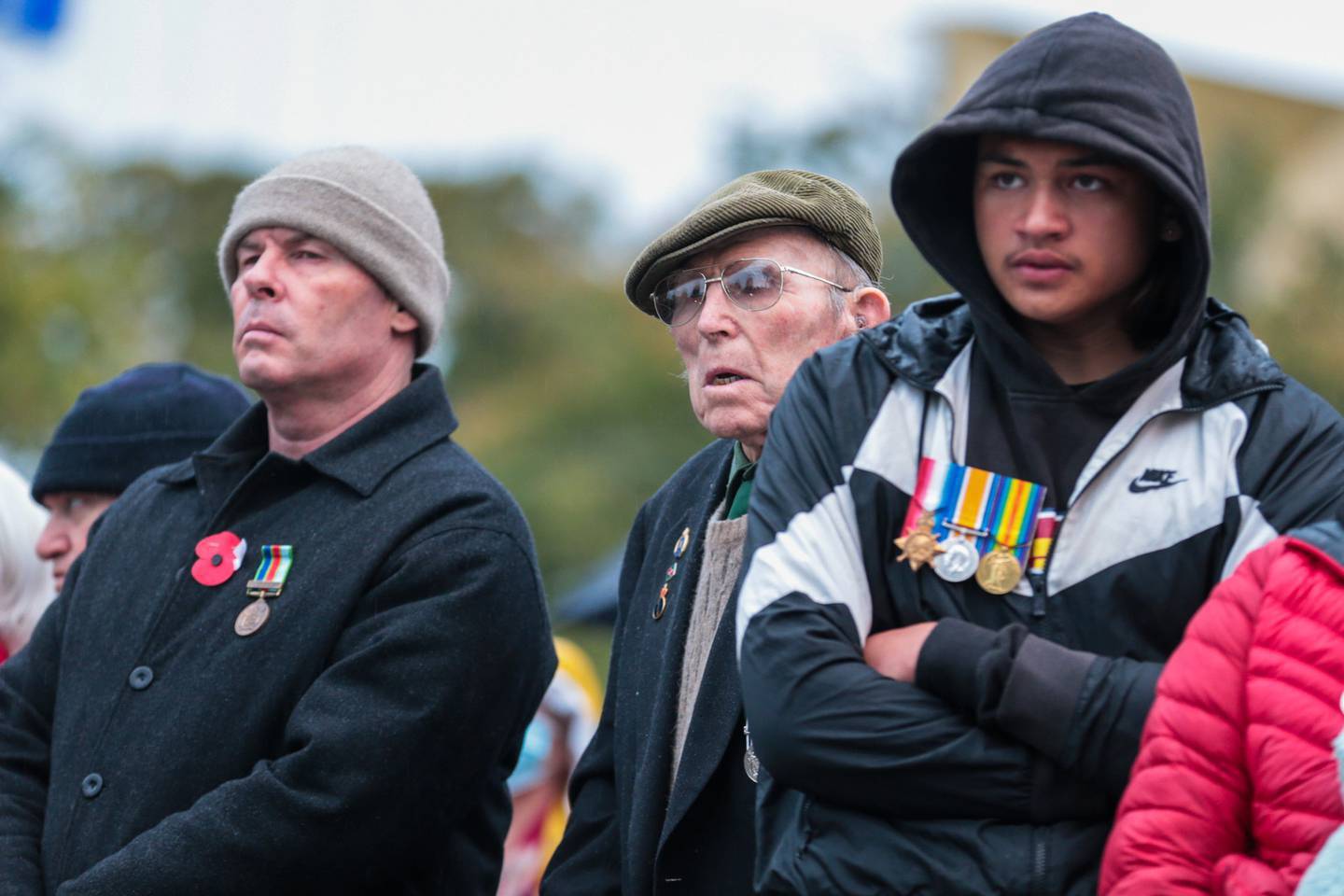
Young and old gather at the Hastings Civic Square Cenotaph this morning. Photo / Paul Taylor
In Australia, High Commissioner Annette King has remembered the sacrifices made by New Zealanders and Australians who served in two World Wars and other conflicts.
"We think of those who have experienced the horror and impact of war - our veterans, our armed services personel, families of the fallen, our refugee communities and those who carried the burden at home.
"We think too of New Zealanders and Australians experiencing fear and heartache for their families and friends affected by current instability and conflicts around the world."
Prince Charles has also remembered the "courageous troops who endured so much in 1915 on the beaches and in the rugged hills of the Gallipoli Peninsula".
And he paid tribute to communities around the world in places torn apart by conflict, and those fighting for freedom from oppression.
Sir Jerry Matepere reflects on the Anzac Spirit
Ka mihi atu ahau ki a koutou kātoa e huihui mai ana ki te whakanui i te ra o ANZAC me te maumāhara ki te hunga i mate i roto i ngā pakanga kātoa. E kore e warewaretia. Kia ora tātou kātoa.
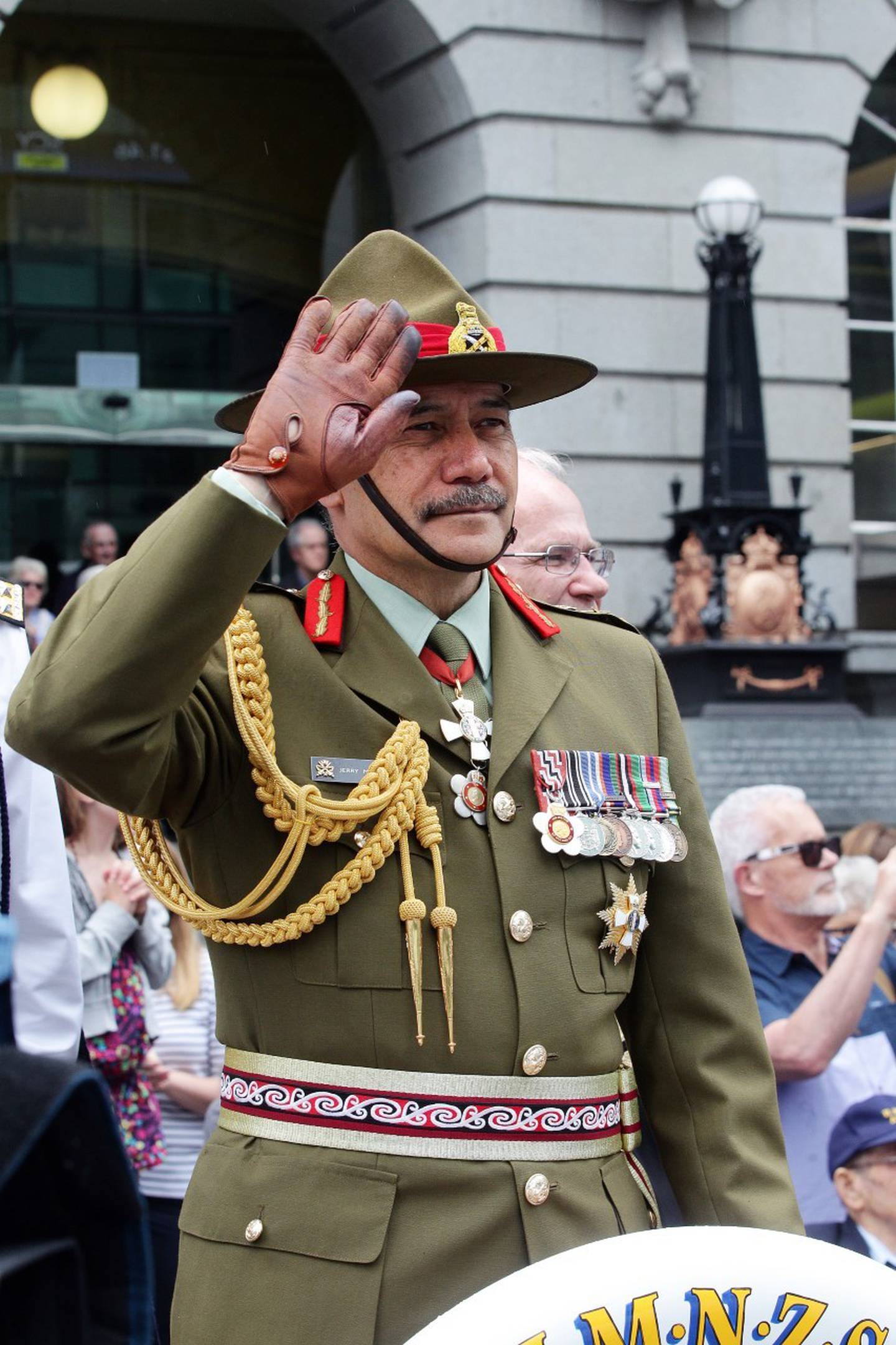
Sir Jerry Matepaere salutes the troops and those defence men and women who made the ultimate sacrifice for New Zealand. Photo / NZME
I acknowledge all of you who will gather to commemorate Anzac Day and to remember those who lost their lives in all wars. They will never be forgotten. Greetings to all.
For the past two years, we have commemorated Anzac Day differently because of the Covid-19 disease. This year, how and where we gather will again be different. What will not differ from our other Anzac Days is the reason we will gather. We will gather to remember the men and the women who served in our nation's armed forces in times of war and conflict, especially those who paid the ultimate sacrifice and recall their legacy, our sense of our national identity - who we are and what we stand for in the world today.
On Anzac Day 2020 I was in a managed isolation hotel in Auckland. Like others who had returned to Aotearoa, I was not permitted to leave my room. Elsewhere in New Zealand at dawn, New Zealanders stood at their gates, separated from others outside their household. They gathered to remember the Anzacs.
I have been privileged to commemorate the Anzacs and their successors in places around the world, notably at Gallipoli. Each Anzac Day I remember my two grandfathers who served during World War I, one of whom fought at Gallipoli. They returned to New Zealand when a different disease - the Spanish Flu - wreaked havoc in communities around New Zealand.
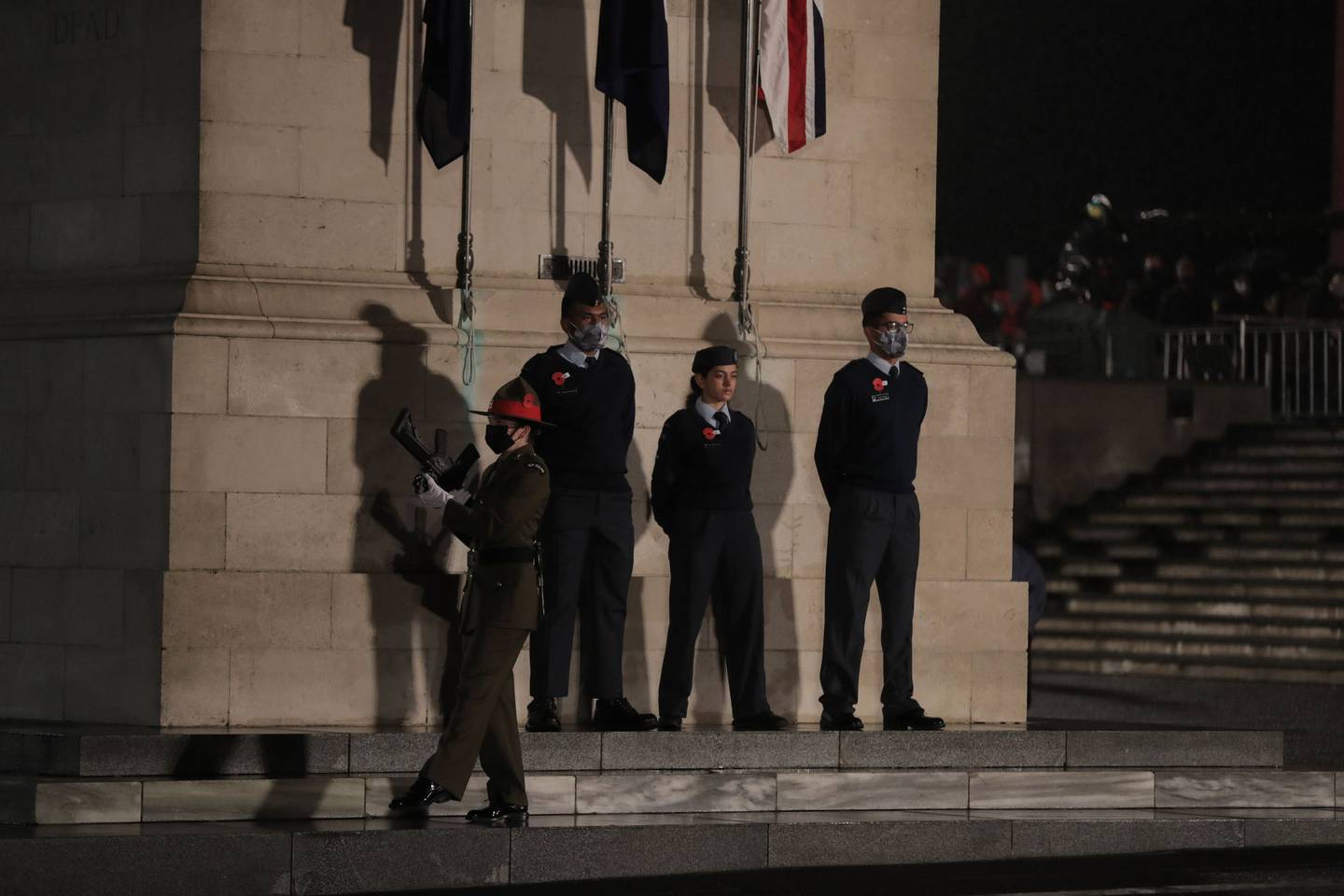
Defence Force staff at the Auckland War Memorial Museum this morning. Photo / Michael Craig
Almost 21 years after World War I ended in 1918, on September 3, 1939, the Prime Ministers of Australia and New Zealand joined Britain in declaring war on Nazi Germany. Anzacs would again go to war. Of Māori support for World War II, Sir Āpirana Ngata wrote: "We will lose some of our most promising young leaders but we will gain the respect of our Pākehā brothers". The losses, Ngata reasoned, were the price of citizenship. That obligation of citizenship has been and is still being, met by New Zealanders - Māori, their Pākehā brothers and sisters - and our Australian cousins. The spirit and example of the first Anzacs endure.
Comradeship, kinship or whanaungatanga is a cornerstone of the Anzac spirit. Military service creates strong bonds of mateship in teams and across generations. One of the special things about attending the Anzac dawn service is the after-match activities and the opportunity for young people to mix and mingle with older veterans. This year, serving soldiers, sailors and aviators in New Zealand will be able to attend Anzac Day services in uniform, as in the past, but will not be able to attend after-functions. The reason, in part, is to protect our vulnerable older veterans - comradeship, kinship and whanaungatanga in practice.
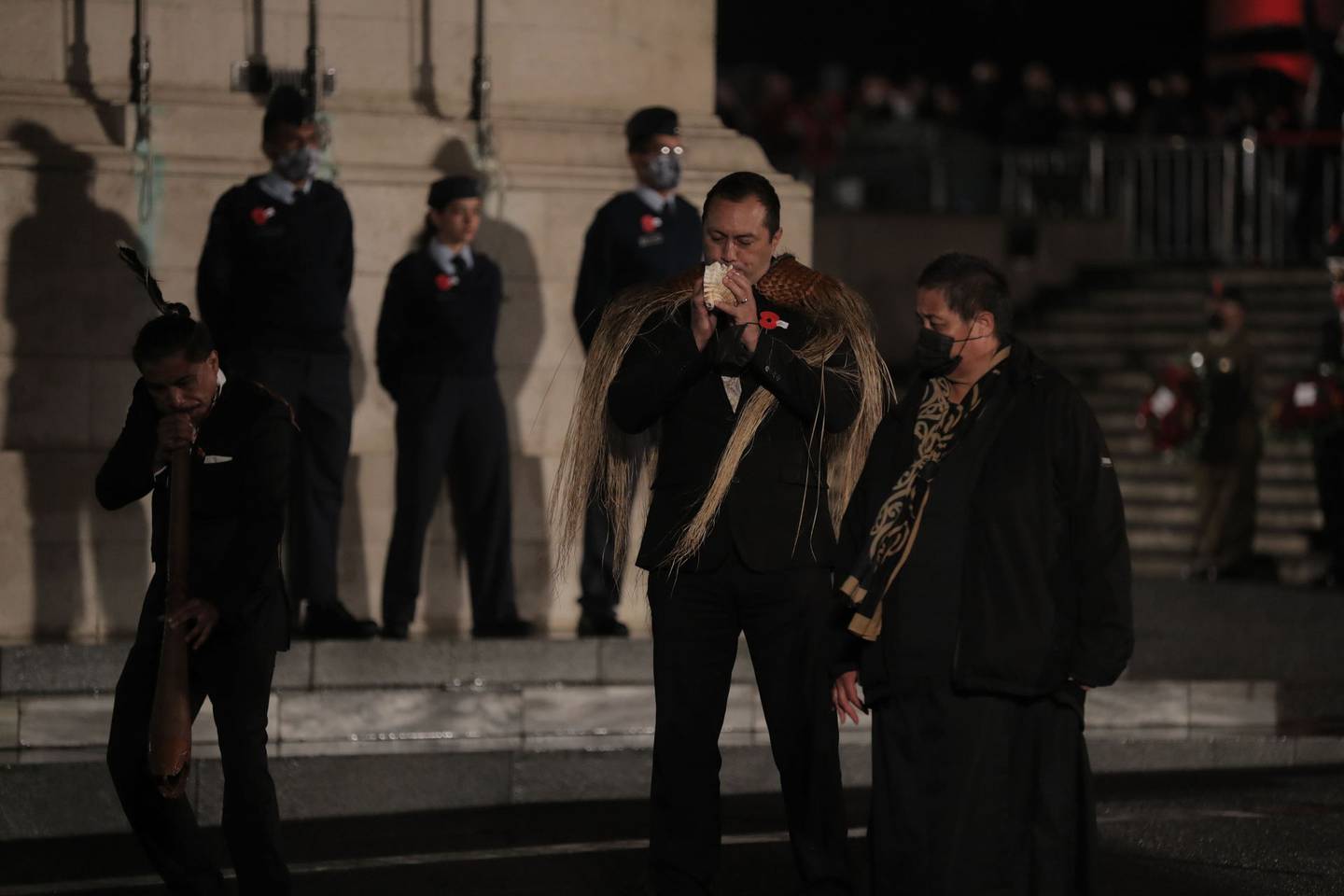
A slimmed-down service at Auckland War Memorial Museum this morning. Photo / Michael Craig
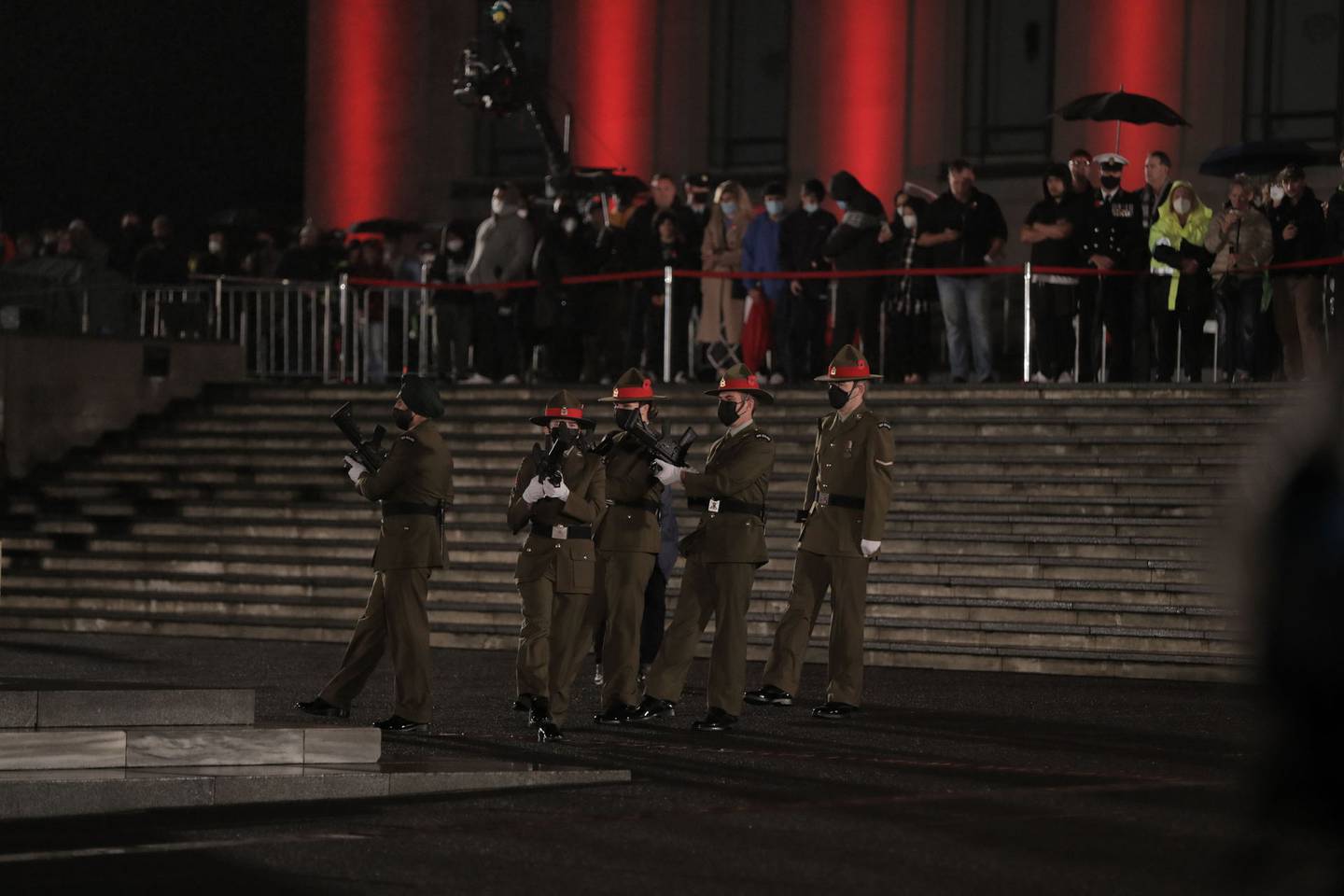
Members of the defence force at the Auckland War Memorial Museum this morning. Photo / Michael Craig
This year when I commemorate Anzac Day I will remember my two koroua and other veterans who have passed away. Two veterans I will particularly remember this year are World War II veteran Lieutenant RNZNVR (Retd) Neil Harton, who died just shy of his 105th birthday, and Vietnam War veteran Lieutenant Colonel (Retd) Sir Wira Gardiner. I spent time with both men at commemorative events - Wira on Crete and Neil at Normandy. Both epitomised the Anzac spirit - courage, mateship and good humour.
"I te hekenga atu o te rā, tae noa ki te aranga mai i te ata, ka maumāhara tonu tātou ki a rātou - At the going down of the sun and in the morning, we will remember them."
- Lieutenant General Sir Jeremiah Mateparae, GNZM, QSO, KStJ (Ngāti Tūwharetoa, Ngāti Kahungunu, Tūhoe) is a former New Zealand soldier who was the 20th Governor-General of New Zealand (2011-2016). A former officer in the New Zealand Army, he was chief of the New Zealand Defence Force (2006 -2011) and then director of the New Zealand Government Communications Security Bureau for five months. After his term as Governor-General, Sir Jerry was the High Commissioner of New Zealand to the United Kingdom between 2017 and 2020.
Take your Radio, Podcasts and Music with you








